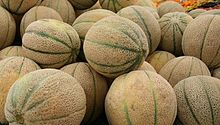
Did you know that the very first phone call was made on March 10, 1876 in the United States? By today’s standards it was a short call over a very short distance. Alexander Graham Bell and his assistant, Thomas A. Watson, were literally just down the hall from each other in a Boston, Massachusetts machine shop. The message was a single sentence, “Watson come here, I want you!”
That was 125 years ago and a very different world than today! The electric light was barely used and cars hadn’t been invented! People wrote letters, or in an emergency sent a telegram. Letters took days or weeks to arrive depending on how far they had to travel. To send a telegram someone would have to go to the telegraph office, sometimes hundreds of miles away, and compose a very short message because they were charged a high price for each word. For the same reasons, news wasn’t immediate like it is now.
By 1880, just four years after the first phone call, there were over 60,000 phones in America. Making a call though, was different than it is today. You would pick up the receiver, speak into the phone and tell the operator the name of the person you wanted to talk to. There was no direct dialing because there were no phone numbers. There were no telephone directories. The operators knew everyone in town who had a phone and how to connect callers. Customers had the best ideas to improve the phone system. When a yellow fever epidemic hit Lowell, Massachusetts, the local doctor became alarmed. What if all four of the town’s operators were sick at once? How could replacement operators memorize the names of the town’s 200 customers and properly route the emergency calls? The doctor came up with a solution. Replace names with numbers. A caller could now request a number rather than a name, allowing the operator to connect without knowing the exact name and matching location of everyone in town.
